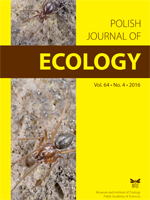Spiders are considered to be sensitive to habitat pollution, but the effect of sulphur contamination on spider communities is poorly known and studied, although the impact of sulphur can be realized by the changes of soils and forest community. This work examined the diversity of ground-dwelling spiders in sulphur-contaminated habitat among three types of studied biotopes (deforested area, thicket, spruce forest) in the area of the Karkonosze Mountains (Sudetes Mountain System) in Poland. In the late 1970s and 1980s, a large-area forest decline in Sudetes Mountains, mainly derived from industrial emissions caused drastic changes in abiotic environment leading to the fundamental forest ecosystem transformation. The results of these damages were studied directly after the forest decline took place. Nowadays, more than 20 years after the ecological disaster, 13 sites were chosen according to habitat type to study the long-term impact of sulphur on spiders. The sites with high and low sulphur content in soil were not significantly different with regard to spider species diversity, although the most deforested sites were characterized by the lower values of sulphur. The only significant positive correlation found was the dependence between spiders' diversity and plant richness. All studied habitats were characterized by different community structure, although thickets was the most diverse with predomination of Linyphiids and Lycosids.
How to translate text using browser tools
1 December 2016
Community Structure of Spiders in Sulphur-Polluted Habitats in the Karkonosze Mts (Poland)
Justyna Rybak
ACCESS THE FULL ARTICLE

Polish Journal of Ecology
Vol. 64 • No. 4
December 2016
Vol. 64 • No. 4
December 2016
biodiversity
ground-dwelling spiders
habitat pollution
Sulphur




